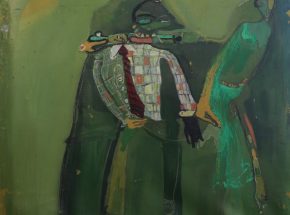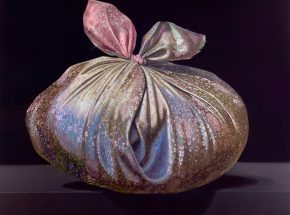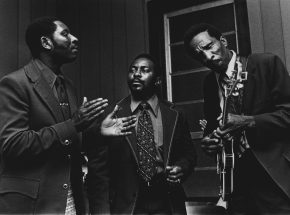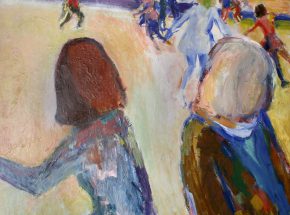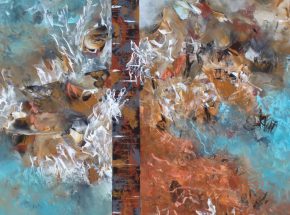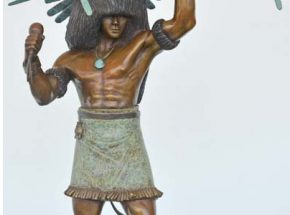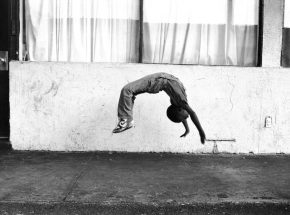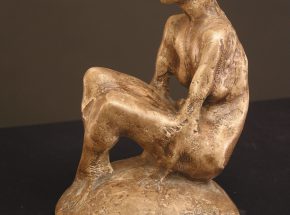
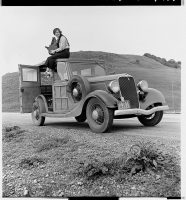
Dorothea Lange was born in Hoboken, New Jersey. She studied photography at Columbia University, New York, and worked in a New York portrait studio until 1918, when she began to travel. Stranded in San Francisco, she continued studio work during the 1920s. With her husband, painter Maynard Dixon, she traveled the Southwest, photographing Native Americans. She believed that the camera could teach people “how to see without a camera.”
The social upheaval brought on by the Great Depression led Lange to take her camera to the streets where she documented the sufferings of the dispossessed, in bread lines and labor strikes, in the wrenching drama of endless waiting. In 1935 with her second husband, Paul Schuster Taylor, a labor economist, Lange was employed by the California and Federal Resettlement Administration (later called the Farm Security Administration) to record the Dust Bowl exodus, when drought and hard times forced thousands of farm families to move west in search of work. Her most familiar image from this assignment is the one seen here, of a migrant mother with her children in Nipoma California in 1936 (now in the Collection of the Library of Congress). Of her work during this era Lange said, “The good photograph is not the object, the consequences of the photograph are the objects. So that no one would say, ‘how did you do it, where did you find it,’ but they would say that such things could be.”
During World War II Lange documented the internment of Japanese-Americans in camps, and then turned her lens on women and members of minority groups at work side by side in California shipyards. Following the war, she covered the founding of the United Nations in San Francisco. The first woman to be awarded a Guggenheim Fellowship, Lange traveled widely during the 1950s and 1960s. She visited Vietnam, Ireland, Pakistan, and India, doing photographic essays for Life magazine.
Lange’s work reflects insight, compassion, and profound empathy for her subjects. Her photographs are reproduced in books and housed in museum collections, most numerously in the Oakland Museum of California. Although she did not consider herself to be an artist, she said of her work: “To live a visual life is an enormous undertaking, practically unattainable… But I have only touched it, just touched it.”
www.americanswhotellthetruth.org
Website
https://moma.org/artists/3373
![Dorothea Lange, Dorothea Lange, Resettlement Administration photographer, in California, Archival digital print, Overall: 32 x 31 x 1 1/2in. (81.3 x 78.7 x 3.8cm), Collection of Art in Embassies, Washington, D.C.; Library of Congress, Prints and Photographs Division, LC-USF34-002392-E [P&P], Washington, D.C.](https://www.art.state.gov/wp-content/uploads/cache/remote/uss58003-s3-amazonaws-com/3281486768.jpg)

![Dorothea Lange, Drought refugees from Oklahoma looking for work in the pea fields of California. Near San Jose Mission, Archival digital reprint, Overall: 38 x 31 x 1 1/2in. (96.5 x 78.7 x 3.8cm), Collection of Art in Embassies, Washington, D.C.; Library of Congress, Prints and Photographs Division, LC-USF34-001608-B [P&P], Washington, D.C.](https://www.art.state.gov/wp-content/uploads/cache/remote/uss58003-s3-amazonaws-com/2578332017.jpg)
![Dorothea Lange, Floyd Burroughs and Tengle children, Hale County, Alabama, Archival digital reprint, Overall: 29 1/2 x 40 1/2 x 1 in. (74.9 x 102.9 x 2.5 cm), Collection of Art in Embassies, Washington, D.C.; Library of Congress, Prints and Photographs Division, LC-USF33-031306-M2 [P&P], Washington, D.C.](https://www.art.state.gov/wp-content/uploads/cache/remote/uss58003-s3-amazonaws-com/849777325.jpg)


